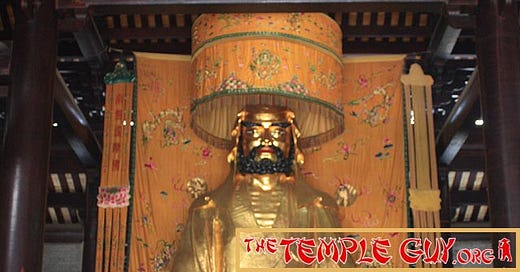Ep. 038: The First Chan Patriarch and the Five (plus One) Great Temples of Guangzhou
Meet Bodhidharma, and learn how he came to China
Come with me as we take a look-see at the "Five Great Temples of Guangzhou" (with an extra one thrown in for good measure) and meet Bodhidharma, the First Patriarch of Chan (Zen) in China, and find how he's directly connected with Huineng, the Sixth.
All this in Episode 038 of
TEMPLE TALES!




